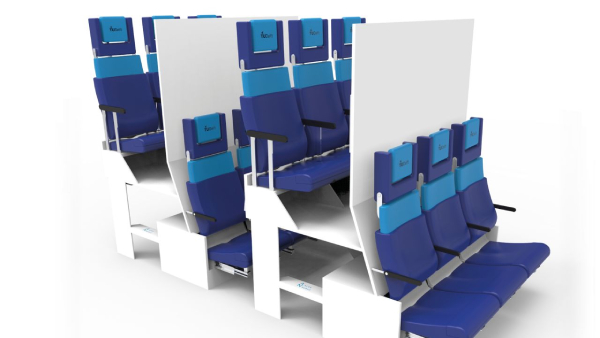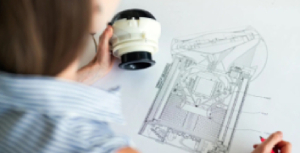
Some of the best things ever made often start as an inspirational idea. It could be because the person with the idea noticed a glaring need never satisfactorily addressed. Many people are often moved by the idea that "this could always be made better", and this idea also happens to be one of the most influential forces that move those with an entrepreneurial mindset.
This is not to say that thinking like an entrepreneur is terrible. Many of the most reckless, most astonishing developments came from the bold courage entrepreneurs are known to have, never knowing when to quit and always going up against the odds. Regarding product development, however, some aspects of entrepreneurship clash or produce less-than-desirable results when applied to making a new product.
Businesses set up and run by entrepreneurs are operated distinctly from traditional corporations, mainly because most entrepreneurs have a hands-on approach to operations. In many instances, the differences are relevant to the scale and many facets of the business, from daily practices to how much work is done daily to how the business deals with its finances.
Regarding entrepreneurs, "best business practices" is often a relative topic, as many have learned to adjust to certain limitations by running the business alone. These limitations, however, are not seen as hindrances but further challenges for the fledgling business, as a brave business owner is also generally known to be one who could turn adversities into opportunities, regardless of the circumstances involved.
Inability to See Limitation vs Planned Parameters
Entrepreneurs are always blessed with unflinching courage, even in adversity. This has always worked out for them because they have already steeled their mind that no matter what the outcome of their endeavour might be, this is something they wanted to do in their way and in their own time. The prevailing mentality that no one can tell an entrepreneur what they can and cannot do because only the entrepreneur knows what they are capable of is inspiring and frightening.
The truth is that there are indeed stellar names in business today that were brought forth by the unyielding courage of an entrepreneur who decided to go up against the odds, but there are only a few of them. The inability to see specific limitations could be both a blessing and a curse, as it could either push an entrepreneur past the breaking point of most others or push them so hard against the wall that the only possible result is absolute failure.
New product development, as done with a traditional business plan or even an innovative one, will always stick to what is established, taught in business school, and universally known to produce success, even if it means working through the corporate machinery to achieve it. The business plan will necessarily have parameters that need to be followed so that the entire process of production is orderly and controlled, with errors kept to a minimum from start to finish.
This is not to say that entrepreneurs don't follow the planning phase as it is generally taught. Still, entrepreneurs have a knack for "doing things their way" as their way of imprinting their signature onto the entire practice so that if and when their endeavour becomes successful, their name is etched into it indelibly. A product manager following a traditional business model will always see the entire project through from start to finish but strictly follow the parameters dictated by the plan, mainly because they answer to a higher authority.
Financial Uncertainty vs Allotted Resources
Entrepreneurs are considered immensely courageous mainly because of their willingness to go up against the competition with little or limited resources. Often, they are only equipped with a great idea but not with the necessary funding to go with it. Regardless of their proposed business, entrepreneurship is still about business, and every business established permanently begins with capital.
This is why entrepreneurs have a close working relationship with venture capitalists, as they are brave investors willing to invest in the entrepreneurs' ideas, regardless of how outlandish they might be. In most cases, however, those providing capital for the entrepreneur's idea often end up owning stock in the business, which goes against the traditional business sense of entrepreneurs, who prefer to own and control their business interests completely.
However, companies engaging in product development follow a detailed plan that includes allotments for finances and resources. These allotments are calculated against actual costs to see if the final product's development, manufacture, and selling are worth everything that went into it.
Unlike entrepreneurs, the funds that go into production are typically capital the production company already has and does not owe to venture capitalists. However, corporations like this are known to operate with financial assistance from banks as part of the financial plan.
The development team is expected to move within the budget so that the total cost-efficiency of the project can be monitored and properly managed. However, financial plans of this type usually include contingency measures for unforeseen issues, such as running out of resource materials, the need for outsourced troubleshooting, repairs for the production line, and other such concerns.
Lone Wolf Mentality vs Teamwork Above All Else
Entrepreneurs are often seen as glory hogs by most other business people mainly because they are perceived as not wanting to share any of the recognition or accolades for any success they might have during their enterprise. The truth of this is that entrepreneurs mostly do this because they believe no one would know the ins and outs of their plan better than themselves. If anyone else were to interfere or offer any kind of assistance (other than financial assistance as provided by venture capitalists), it would only complicate matters and affect their plans adversely.
It isn't so much a lone wolf mentality as a driving desire to be on top of everything that has to do with the business because, in an entrepreneur's head, they already have a vision of how things should be, how it should go, and how best to fix whatever issues arise. Many might see this as arrogance, but in reality, this is total dedication on the part of the entrepreneur to the idea that became their business.
When it comes to production development, however, it doesn't matter if the business is owned by a single entrepreneur who wants to run everything or if it is run by a corporation with a board of directors calling the shots -- production must always be a team effort.
Whether the item in production is an incredible technological innovation, or the next best commercial food item, or even a simple improved version of an existing product, the production team will always need to be on top of everything that has to do with production development, because there are separate and distinct tasks entailed in the endeavour, with several phases before the product is ready to go to market. All of these things need the dedicated work of a team.
First One Out of Production Hits the Market ASAP vs Scheduled Release After Prototyping and Testing
Many believe that entrepreneurs are so rooted in their brash courage when it comes to the business that they often shoot the first thing that comes out of production out into the market so that as many people already see their brand as possible. Many believe this to be part of their "come out swinging" mentality, where they shock and take everyone by surprise, as proof that even though they don't follow the practices and rules of traditional business, they could still go and make a name for themselves.
There is, however, a practical reason why many entrepreneurs appear to be shooting out the first things that come out of their production, and that is as simple as financial concerns. The sooner they have a product ready to be sold, the higher the likelihood they will start earning back what they used in production and perhaps even profit if the sales continue.
This is also important for an entrepreneur because the longer it takes for them to have a product ready for the market, the longer they remain in a negative income state, and overhead expenses will continue to pile up the longer they remain in production.
The prototyping and testing part of product development might seem like wasted opportunities to sell to those not keen on the reason for these things. Prototyping and testing are two essential facets of production and manufacturing because they give insights that might have been considered during the planning phase of the product. Prototyping and testing will allow a small group of consumers to experience the product before it is released to the public.
This provides honest feedback that the production team could take into consideration and determine if the final product is indeed ready to hit the market or if there is a need to reconsider some things and retool the product in some way to make it better or at least more acceptable to the general public. The prototyping and testing phase could also save the company from expensive legal issues because the insight gathered from the control group of consumers will give them any information that some consumers might take exception to.
It is not uncommon for consumers to express their displeasure at some brands or companies by bringing them to court, regardless of how ludicrous their claims might be. Granted that for some, this practice is an insidious attempt to make money off complaints against the company, the input given through prototyping and testing is already a good showing for the company, as it proves they are concerned with not just the approval of the consumers, but their welfare as well.
David against Goliath vs Shoulder to Shoulder with the Competition
Throughout history, the presence of an entrepreneur in any industry is seen as David facing off against Goliath, as it is usually a start-up owned by one brave soul or maybe even a small group of people facing off against a corporation or brand that could have hundreds, if not thousands, on their payroll. Entrepreneurs have been known to taunt these more prominent brands and corporations by claiming that the product they have come out with is vastly superior to the product already in the market that the more prominent brands produced.
This entrepreneurial passion may be seen as foolish bravado. Still, in reality, it is already the start of the marketing campaign of the entrepreneur, as they stir up things so that their corporate battle with the more prominent brands may be seen and heard by the public. This strategy creates enough buzz to inspire curiosity among the consumers so that enough people would talk and buy the entrepreneur's product to see what the fuss is about and if the courage being shown is warranted.
The more prominent brands who stand shoulder to shoulder with their equally established competition may barely even notice the efforts of small businesses who go up against them since they know they have already cornered a portion of the market. They have a captive audience because of their long presence in the industry. In many instances, the more prominent brands may even welcome such jabs from smaller businesses because these are marketing moves and corporate strategies they could afford to meet head-on.
On the other hand, the competition between equally big brands could become quite costly for both sides as each one strives to outdo the other. Big brands are known to make big moves and to counter the big moves of the other big grand; each move needs to be bigger than the other. This is why facing off against a relatively small business owned by an entrepreneur is more cost-effective than facing off with another company equally equipped with considerable resources and can stand toe-toe with the competition.
Start-up Setup vs Organised and Corporate-ready
Companies run by entrepreneurs tend to be lean and mean, mainly because sustaining a small operation is far more practical if the business is still in its infancy. The only problem is that many entrepreneurs-owned businesses become stagnant and stay in the start-up stage for years, even when there is already an opportunity to grow and expand. This is often attributed to the entrepreneur's fear of having more significant expenses if the company starts to entertain notions of growth and change.
A growing company will also need more people and middle-level management, meaning the power and authority within the start-up will no longer be solely in the hands of the entrepreneur who started everything. Letting go of power and authority could be difficult for those who have grown accustomed to it or those who simply don't trust others enough to run the business alongside them.
This dislike of hiring others to help manage the company could become a severe problem, particularly when the demand for the entrepreneur's product increases. More orders will necessarily mean more work for everyone. Suppose everyone becomes overworked because the entrepreneur refuses to add to their workforce. In that case, the quality of their production will be affected, and if it gets bad enough, they will begin to lose customers and buyers.
A company that has been into production development will know that specific tasks require a certain amount of workforce and skills to complete effectively. Paying skilled people will cost more than just paying regular workers, but this is a necessary expense if the company wants to maintain a certain level of quality in its product. Apart from maintaining quality, it is not uncommon for understaffed businesses to cut corners to save on expenses to meet mishaps.
Sometimes, these mishaps are minor and only delay work for some time, a day at most. In other instances, the mishaps could become disastrous, as worker exhaustion could lead to neglect or even accidents. This is why part of proper product development planning is ensuring that the team is made up of appropriately suited members and that there are enough people to do all the necessary work, particularly the work that requires a certain level of specialisation.
It All Boils Down to a Proper Mindset
The comparisons made here are not intended to speak ill of entrepreneurs. The influence of the entrepreneurial mind has become a mirror for many businesses, particularly when it comes to showing that staying safe all the time could also mean staying in the same place all the time instead of taking a leap that could propel the business to new heights because even for the bigger businesses that have been in operation for the longest time, there is always room for improvement because most businesses are only as good as the best thing they came out with today. Someone else might come out with something better tomorrow.















































